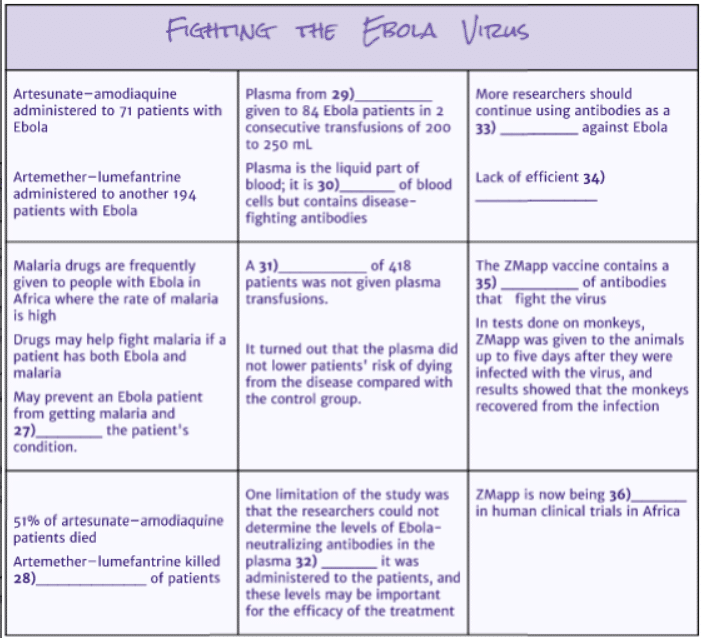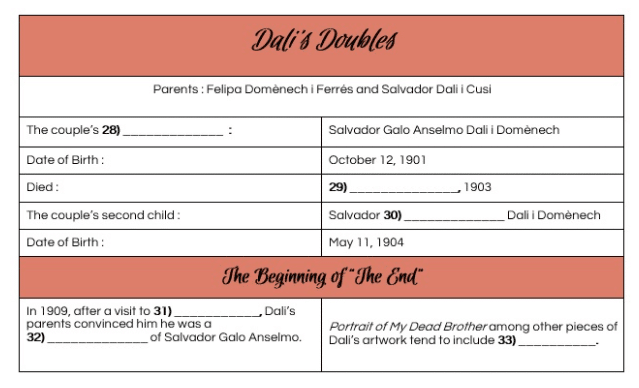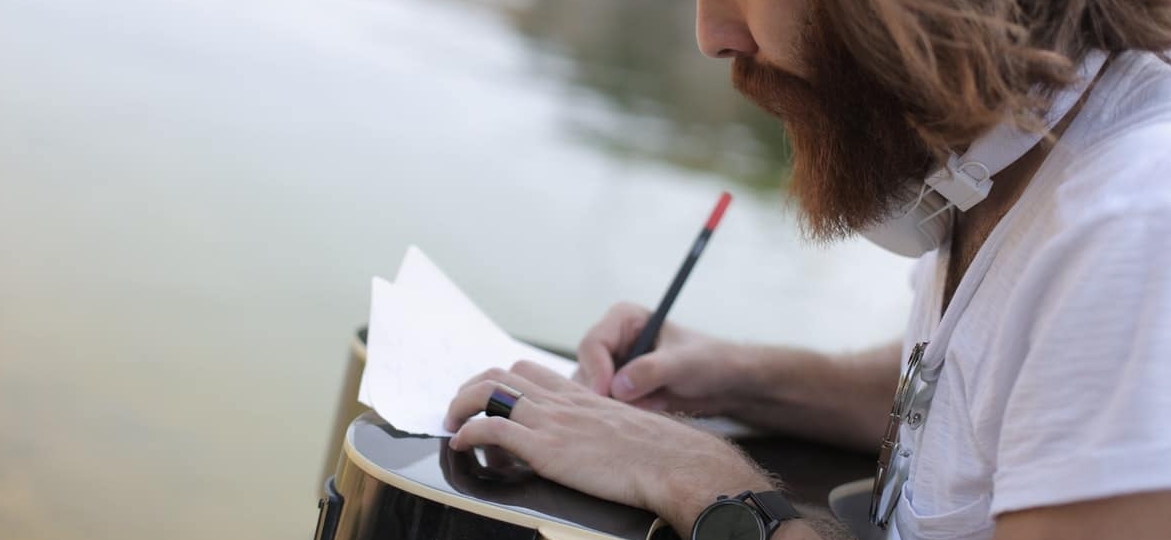In this article you’ll be taking a look at Part 3 of the IELTS Reading section.
We will address the following points:
- The different types of questions they can ask you
- Some techniques to help you find the answers more quickly
- what GlobalExam’s platform has to offer you!
So, let’s start practicing for the IELTS right away!
Here with the article “Practice Exercises for All the Sections of the IELTS Exam” to help you study the entire tests and sections.
We also have written articles for your kind read on the IELTS Reading Exercise 2 and the IELTS Reading Exercise 1.
IELTS Academic Reading Exercise 3 Sample Questions
Exercise 3 of the IELTS Academic Reading test is generally the most difficult text of the IELTS Reading section. You should be prepared and make sure you leave yourself at least 20 minutes to work on Exercise 3. Here are the types of questions you can expect to see in Exercise 3:
Sample Question 1
IELTS will test two different types of understanding – specific understanding and more global comprehension. You’ll often need to find who said something, like in the question below:
Look at the following sentences (Questions 1-5) and the list of people below.
Match each sentence with the corresponding researcher in the article.
Choose the correct letter A-D below.
You may use any letter more than once.
By reading the paragraph and looking at the question, you’ll need to find who said the information that’s mentioned in the question:
A:
We have long been adding light to the outdoor environment. But only in the past decade or two have experts become aware of the consequences for wildlife, human health, and residents’ view of the night sky, says Chris Luginbuhl, a retired astronomer active in the Flagstaff Dark Skies Coalition, in Arizona.
In 2014, Luginbuhl and his colleagues showed that because the human eye is more sensitive to blue and green light than yellow and orange, some white streetlights can contribute up to four times as much nighttime sky glow as the amber-hued sodium lamps of the same luminous output.
Worse, John Bullough, director of the transportation and safety lighting programs at Rensselaer Polytechnic Institute, in Troy, NY, found that the impact of ‘discomfort glare”–which may make it hard for the eye to focus on objects–peaks in the blue part of the spectrum that was abundant in early LEDs.
Some color lights can quadruple the amount of light pollution.
- A.
- B.
- C.
- D.
First you need to find the information, then you need to check who said it. Be careful to double-check which name goes with which letter as it’s an easy way to lose points.
Sample Question 2
During the test, you’ll find some answers are easier to locate than others. Look at the following sample text and question:
G:
The fact that the Soviet Union could build such a huge number of tanks is mostly due to the decisions made in the 1930s to construct civilian factories in such a way that they could be easily turned into military factories.
The Allied Lend-lease also provided plenty of other vehicles – including trucks and locomotives – so the Soviet could concentrate on tank production. This raises an interesting question: If the war had continued a few years longer, how could the Soviet Union have avoided the socio-economic collapse caused by total lack of such basic things as new tractors and spare parts for the old ones?
Why was the Soviet Union able to build a large number of tanks?
- Normal factories could be quickly transformed into tank production sites
- They had more soldiers than Germany and the United States
- They never painted the tanks or added extra amenities
- They didn’t have to worry about spare parts for tractors
The first sentence of paragraph G is almost identical to the question, so the chances are high you’ll find the answer here! When you do manage to answer a question quickly, do not waste time checking and double-checking your answer. Move on to the next question, which may be more difficult and require more time!
Sample Question 3
You’ll often find in Exercise 3 that the questions are more challenging than for the first two texts. Have a look at the following example:
For questions 1-4, choose TWO correct answers.
The list below gives some characteristics of the experiment conducted on clown fish.
- Clownfish used in the experiment were unable to reproduce after the tests.
- The clown fish’s ability to hear decreased in extremely acidic water.
- The two experiments are conducted one right after the other.
- A speaker was installed along the bottom of the tank.
- The clownfish were put into an enclosed space to simulate darkness.
- The scientists programmed the acidity of the water to simulate mid-21st century oceans.
- Clownfish tended to avoid their predators in more acidic water.
Not only do you need to check that you understand each point, but for each question you need to find two correct answers. If you only give one answer, it’ll be marked as an incorrect answer.
You’ll often then have questions similar to these:
Which two characteristics are NOT mentioned by the writer of the text?
Which two characteristics are mentioned by the writer of the text?
As soon as you find that a characteristic is mentioned, move onto the next point. You do not need to check as it’s mentioned twice because once is enough.
Sample Question 4
Often for Exercise 3, you’ll need to complete a table:

Don’t get distracted by all the information on the table! Locate the questions and remember that you only need to answer the questions. Everything else is unnecessary and is a distraction.
For example, the following paragraph refers to question 28:
D:
The researchers found that 51 percent of the patients who were given artesunate–amodiaquine died, whereas about 64 percent of patients given artemether–lumefantrine died. This translates to a 31 percent lower risk of death in the patients who took artesunate–amodiaquine, compared with those who took the other drug. However, more research is needed to confirm these results, the researchers said.
It is possible, for example, that taking the other drug, artemether–lumefantrine, may increase patients’ risk of death, which could affect the interpretation of the results. It is also possible that the patients who were given artesunate–amodiaquine had some unmeasured characteristics that altered their risk of death, the researchers noted.
You only actually need to understand one sentence in this paragraph to be able to answer the question correctly!
Sample Question 5
In the following example, you again need to find who said what. This time you have a slight advantage:
Questions 26 – 32
Look at the following items (Questions 26-32) and the list of people below.
Match each item with the person or people involved.
Choose the correct letter A-H for questions 26-32.
NB: You may use letters more than once
1.Dana Reed
2. Scott Thomson
3. Jack Hoban
4. Steven Olson (Georgia State University)
5. Michael Arter (Penn State University)
6. Wesley Skogan (Northwestern Uni)
7. Kevin Lutz
8. Charlotte Gill (George Mason Uni)
Let’s have a look at a question:
She believes that community policing does not keep citizens from committing crimes.
As the subject of the question is “she” and we only have 2 potential female names, even if you don’t know the answer, you can take a well-informed guess answer. These kinds of techniques can save you a lot of time and help you to improve your score!
Sample Question 6
The following text discusses the artist Salvador Dali:
Dali’s Doubles – Ambiguity and duplicity are hallmarks of Salvador Dali’s artworks
Salvador Galo Anselmo Dali i Domènech was born to Felipa Domènech i Ferrés and Salvador Dali i Cusi on October 12, 1901, in the town of Figueres in Catalonia, Spain.
The couple’s first born child, he showed signs of great precociousness, but his potential was tragically cut short. Little Salvador fell sick with gastroenteritis and died just two months shy of his second birthday
His parents were devastated but, in their grief, conceived another child. On May 11, 1904, a second baby boy entered the world. What was his name? Also Salvador.
As you can see, you’re given a lot of information and dates, and this is just in the first paragraph!

The questions for this text are in the form of a table. The answers to questions 28 to 30 are all in the first paragraph. This time you need to look for rephrasing – for example, the date when the child died is “two months shy of his second birthday.” To be able to have the answer, you need to know what the expression “shy of” means with a number.
All of the IELTS Reading passage questions test your comprehension, and in Exercise 3 the questions can be tricky! Working with sample questions and answers is fundamental if you want to progress! You can find the answers to all of the questions shown here, and many more, on our e-learning platform, as well as numerous exercises on vocabulary and grammar.
Get Access To Countless Other Sample Questions On GlobalExam
GlobalExam is an online test preparation platform on which you can train for the IELTS General or Academic in real exam conditions. Indeed, you will be able to do full mock exams, and several exercises per section, that will all be corrected.
Your results are saved automatically, so you can see your progression along your online training thanks to a graph, and the details on your skills in order to identify your strengths and weaknesses. According to that, you can work on your gaps thanks to our grammar and vocabulary study sheets, also available on the platform.
You can try GlobalExam for free, and access the equivalent of a full mock exam, you just have to register!



